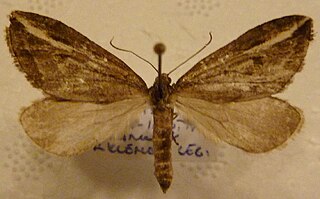
The streak is a moth of the family Geometridae. It is found in northern and western Europe and north Africa. It is common in Britain, but local and confined to the north in Ireland. The species was first described by Michael Denis and Ignaz Schiffermüller in 1775.

The shark is a moth of the family Noctuidae.
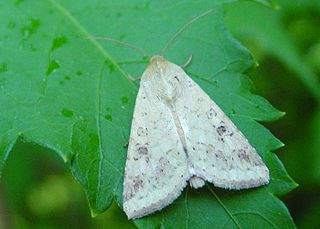
The cotton bollworm, corn earworm, or Old World (African) bollworm is a moth, the larvae of which feed on a wide range of plants, including many important cultivated crops. It is a major pest in cotton and one of the most polyphagous and cosmopolitan pest species. It should not be confused with the similarly named, related species Helicoverpa zea.

Macrothylacia rubi, the fox moth, is a lepidopteran belonging to the family Lasiocampidae. It was first described by Carl Linnaeus in his 1758 10th edition of Systema Naturae.

The Macariini are a tribe of geometer moths in the subfamily Ennominae. Though they share many traits with the Sterrhinae, this is probably plesiomorphic rather than indicative of a close relationship, and DNA sequence data points to the Boarmiini as particularly close relatives of the Macariini. All things considered, this tribe might still resemble the very first Ennominae more than any other living lineage in the subfamily.

Hippotion celerio, the vine hawk-moth or silver-striped hawk-moth, is a moth of the family Sphingidae. It was described by Carl Linnaeus in his 1758 10th edition of Systema Naturae.
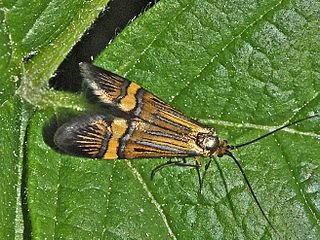
The longhorn moth or yellow-barred long-horn is a diurnal lepidopteran from the moths family Adelidae.

Yponomeuta plumbella is a moth from the family Yponomeutidae, the ermine moths.

The nine-spotted moth or yellow belted burnet is a moth in the family Erebidae. The species was first described by Carl Linnaeus in his 1758 10th edition of Systema Naturae.

Colias palaeno, known by the common names moorland clouded yellow, palaeno sulphur, and pale Arctic clouded yellow, is a butterfly in the family Pieridae.

Ematurga atomaria, the common heath, is a moth of the family Geometridae.
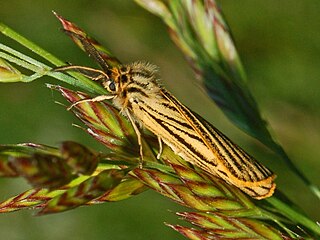
Spiris striata, the feathered footman, is a moth of the family Erebidae. The species was first described by Carl Linnaeus in his 1758 10th edition of Systema Naturae.

Zygaena exulans, the mountain burnet or Scotch burnet, is a moth of the family Zygaenidae.
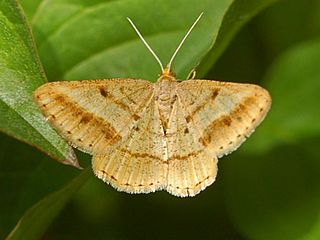
Isturgia is a genus of moths in the family Geometridae described by Jacob Hübner in 1823.

Zygaena lonicerae, the narrow-bordered five-spot burnet, is a moth of the family Zygaenidae. The species was first described by Theodor Gottlieb von Scheven in 1777.

Bembecia ichneumoniformis, the six-belted clearwing, is a moth of the family Sesiidae.
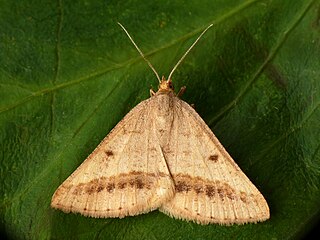
Isturgia arenacearia, the sand bordered bloom, is a moth of the family Geometridae. It was first described by Michael Denis and Ignaz Schiffermüller in 1775.

Scopula corrivalaria is a moth of the family Geometridae. It is found from Japan, Korea, China and the Russian Far East through Siberia and Russia to western Europe. In Europe, it ranges from northern Central Europe to the Mediterranean. The habitat consists of marshes and wet meadows.

Isturgia catalaunaria is a moth of the family Geometridae first described by Achille Guenée in 1858.

Therion circumflexum is a species of ichneumon wasp in the family Ichneumonidae.




















